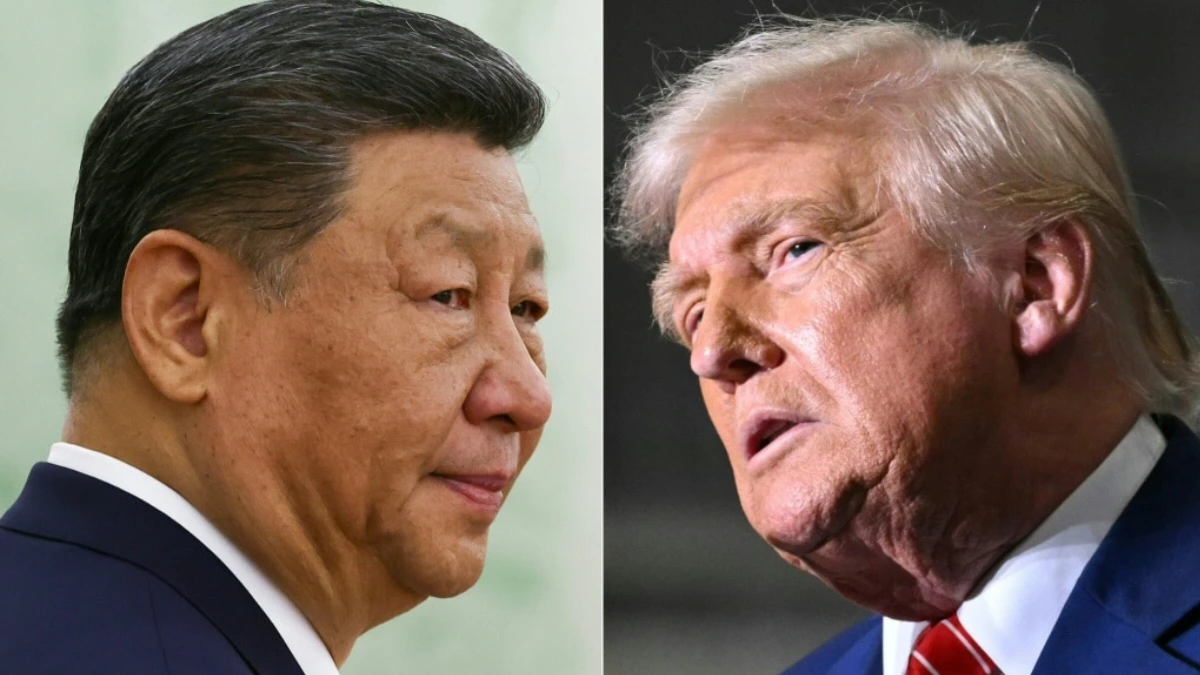KUALA LUMPUR — The United States and China reached a framework for a trade agreement on Sunday, a move both sides described as a step toward easing long standing tensions before an anticipated meeting between US President Donald Trump and Chinese President Xi Jinping later this week.
US Treasury Secretary Scott Bessent and Trade Representative Jamieson Greer met with Chinese Vice Premier He Lifeng and top trade negotiator Li Chenggang on the sidelines of the Association of Southeast Asian Nations summit in Kuala Lumpur for what officials called constructive and substantive discussions.
“I think we have a very successful framework for the leaders to discuss on Thursday,” Bessent told reporters after the fifth round of face to face talks since May.
The agreement comes amid renewed efforts by Washington and Beijing to prevent an escalation of their trade dispute, which has disrupted global markets for months.
Both countries have imposed or threatened sweeping tariffs and export restrictions in a standoff that has rippled through industries ranging from agriculture to high-tech manufacturing.
Trump, speaking to NBC’s Meet the Press, said he expected the framework to delay China’s expanded export controls on rare earth minerals and magnets and forestall a new 100% US tariff on Chinese goods he had threatened to impose in early November.
The U.S. side also pushed for expanded Chinese purchases of American soybeans and other agricultural products, greater market access for US companies, and stronger cooperation in combating the flow of fentanyl a key factor behind recent US sanctions.
Li said the two sides had reached a “preliminary consensus” and would now seek approval through domestic channels. “The US position has been tough,” he said. “We have experienced very intense consultations and engaged in constructive exchanges in exploring solutions to address these concerns.”
Trade analysts say the framework, while tentative, represents a pragmatic pause in an otherwise fractious relationship between the world’s two largest economies.
“This agreement is not a breakthrough but a lifeline,” said Dr. Elaine Park, a senior fellow at the Asia Pacific Economic Institute in Singapore.
Both governments are facing domestic and international pressure to stabilize trade flows before the end of the year. The US and China are currently bound by a trade truce set to expire on November 10.
Under that agreement, both sides rolled back some of the punitive tariffs imposed during earlier phases of the dispute. The latest framework discussions are expected to pave the way for a potential extension.
Still, experts warn the truce remains fragile. “The structural differences from industrial policy to intellectual property enforcement are still unresolved,” said Li Yuhan, an international trade researcher at Peking University.
The framework only delays deeper conflict unless both sides are willing to compromise. Since the first round of trade talks in May, US exports to China have dropped by nearly 8 percent, while Chinese imports of US agricultural products have fluctuated sharply, according to data from the US Department of Commerce.
The US has also cited China’s export restrictions on rare earth minerals materials essential to electronics, electric vehicles, and defense manufacturing as a major pressure point.
These minerals account for nearly 60 percent of global supply, and China controls more than 70 percent of processing capacity.
Economists estimate that new 100% tariffs on Chinese goods could raise consumer prices in the United States by as much as 3 percent within six months, while Beijing’s export curbs could cause shortages in key manufacturing sectors worldwide.
Business leaders and trade professionals in both countries expressed cautious optimism about the talks. “We just want predictability,” said Mark Danner, an Illinois soybean farmer who has seen orders from China drop since 2023.
“Even a temporary agreement gives us some breathing room before planting season.” In Shanghai, electronics exporter Chen Rui echoed similar sentiments.
The trade tensions have forced many of us to diversify markets,” Chen said. “If this framework holds, maybe we can start planning long term again.”
However, skepticism remains high among small manufacturers. “We’ve seen frameworks come and go,” said Angela Torres, a logistics manager based in Los Angeles. “Until the tariffs actually come down, businesses are still operating in uncertainty.”
Trump arrived in Malaysia on Sunday for the ASEAN summit, his first stop on a five day Asia tour that will conclude with a face to face meeting with Xi in South Korea on October 30.
Both leaders are expected to finalize the trade framework and announce next steps for broader cooperation.
According to US officials, Trump may also raise issues beyond trade including China’s stance on Taiwan, the detention of Hong Kong media tycoon Jimmy Lai, and Beijing’s role in managing global supply chains affected by the war in Ukraine.
“The upcoming meeting could set the tone for US China relations heading into 2026,” said Professor Robert Klein of Georgetown University. “Even incremental progress would be significant given how strained things have been.”
Both governments have agreed to follow-up meetings, with potential summits in China and the United States later this year. “We’re going to meet them later in China, and we’re going to meet in the US in either Washington or at Mar a Lago,” Trump told reporters.
The US China trade framework marks a cautious but important step toward de-escalation in an increasingly complex relationship defined by competition and interdependence.
Whether the framework leads to a lasting agreement or merely postpones another round of tariffs will depend on the outcomes of the Trump-Xi meeting and the willingness of both sides to compromise on deeper economic and political differences.
As trade negotiators prepare their leaders’ agenda, global markets are watching closely hopeful that this fragile truce can hold long enough to restore stability to the world’s two most powerful economies.

